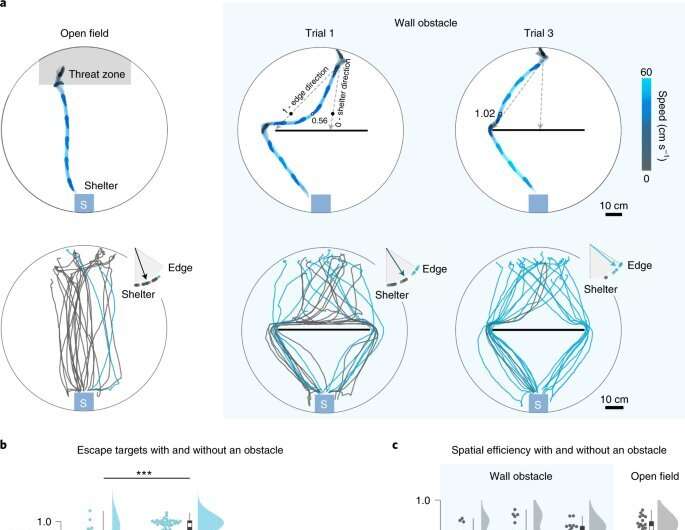September 13, 2021 report
Experiments challenge cognitive-map hypothesis in mice

A team of researchers at the Wellcome Centre for Neural Circuits and Behaviour, in the U.K. reports a study that challenges the cognitive-map hypothesis for animals. In their paper published in the journal Nature Neuroscience, the group describes experiments they conducted with lab mice. Kiah Hardcastle, with Harvard University, has published a News & Views piece in the same journal issue, outlining research into how the brain keeps track of the world and the work by the team on this new effort.
In 1948, cognitive behaviorist Edward Tolman suggested that humans create what he described as "cognitive maps" in their brains to keep track of the world around them. Such maps, he suggested, are similar to paper maps created for the same purpose. Tolman's cognitive map ideas are still used today to explain human navigation. Less clear is whether animals use the same sorts of maps to keep track of the world around them. In this new effort, the researchers ran a series of experiments with mice designed to better understand how they keep track of where things are in their world—such as threat zones and shelters.
The experiments began by creating a threat zone and a shelter in a simple cage. The threat zone was an area defined by events rather than boundaries. When a mouse ventured into it, a sudden noise would startle the mouse, which looked for a safe place to hide. That safe place was a small shelter on the opposite side of the cage. The researchers allowed test mice to look around in the cage and then began startling them when they entered the threat zone. The mice generally ran straight for the shelter. Next, the researchers put up a roadblock, a simple wall between the threat zone and the shelter that prevented the mice from running straight to the shelter when alarmed. After scurrying along the wall, the mice found they could go around it. After that, they headed straight for the wall edge when startled. Interestingly, the researchers found that the mice continued to run to the edge of the wall, even after the wall was removed, and even after allowing the mice to look around the cage first. The researchers suggest this indicates that the mice do not use a cognitive map, but instead memorize waypoints in their environment that lead to other waypoints that eventually lead them to a desired destination.
More information: Philip Shamash et al, Mice learn multi-step routes by memorizing subgoal locations, Nature Neuroscience (2021). DOI: 10.1038/s41593-021-00884-8
Kiah Hardcastle, A step-by-step guide home, Nature Neuroscience (2021). DOI: 10.1038/s41593-021-00893-7
© 2021 Science X Network



















